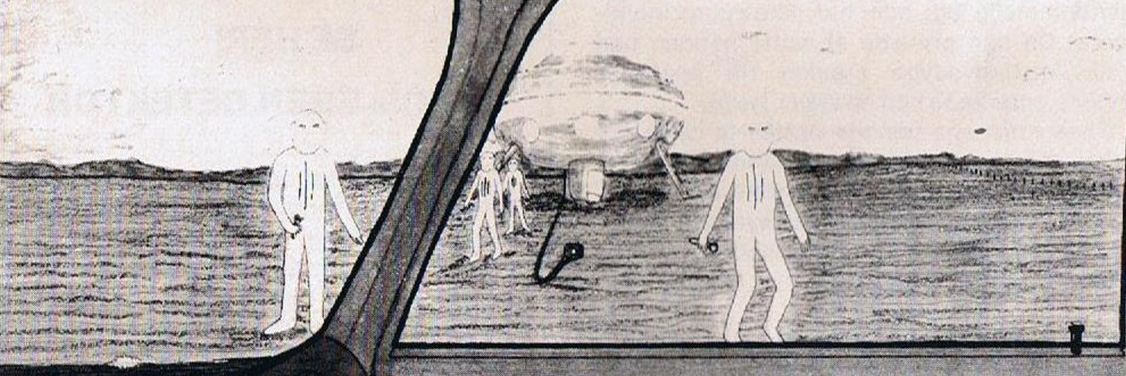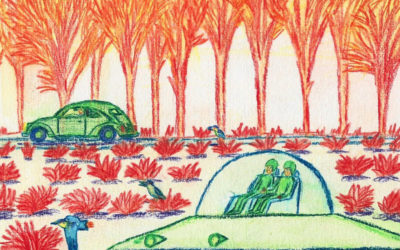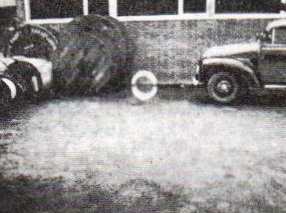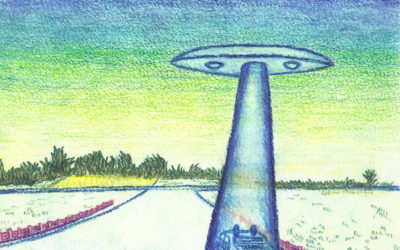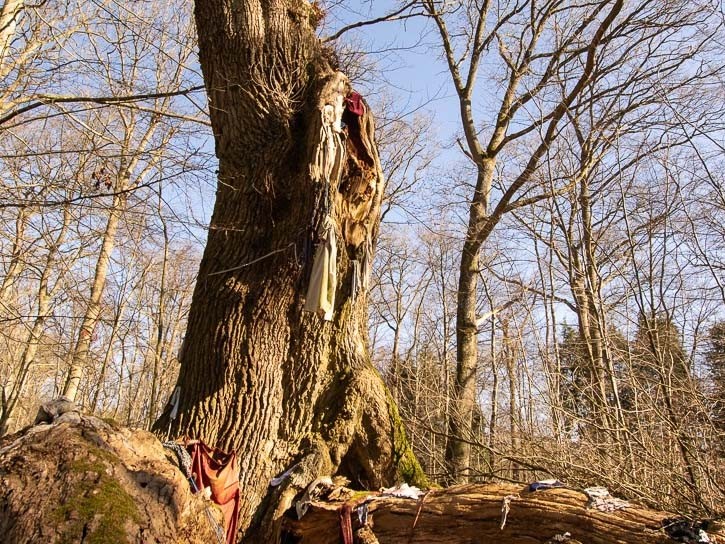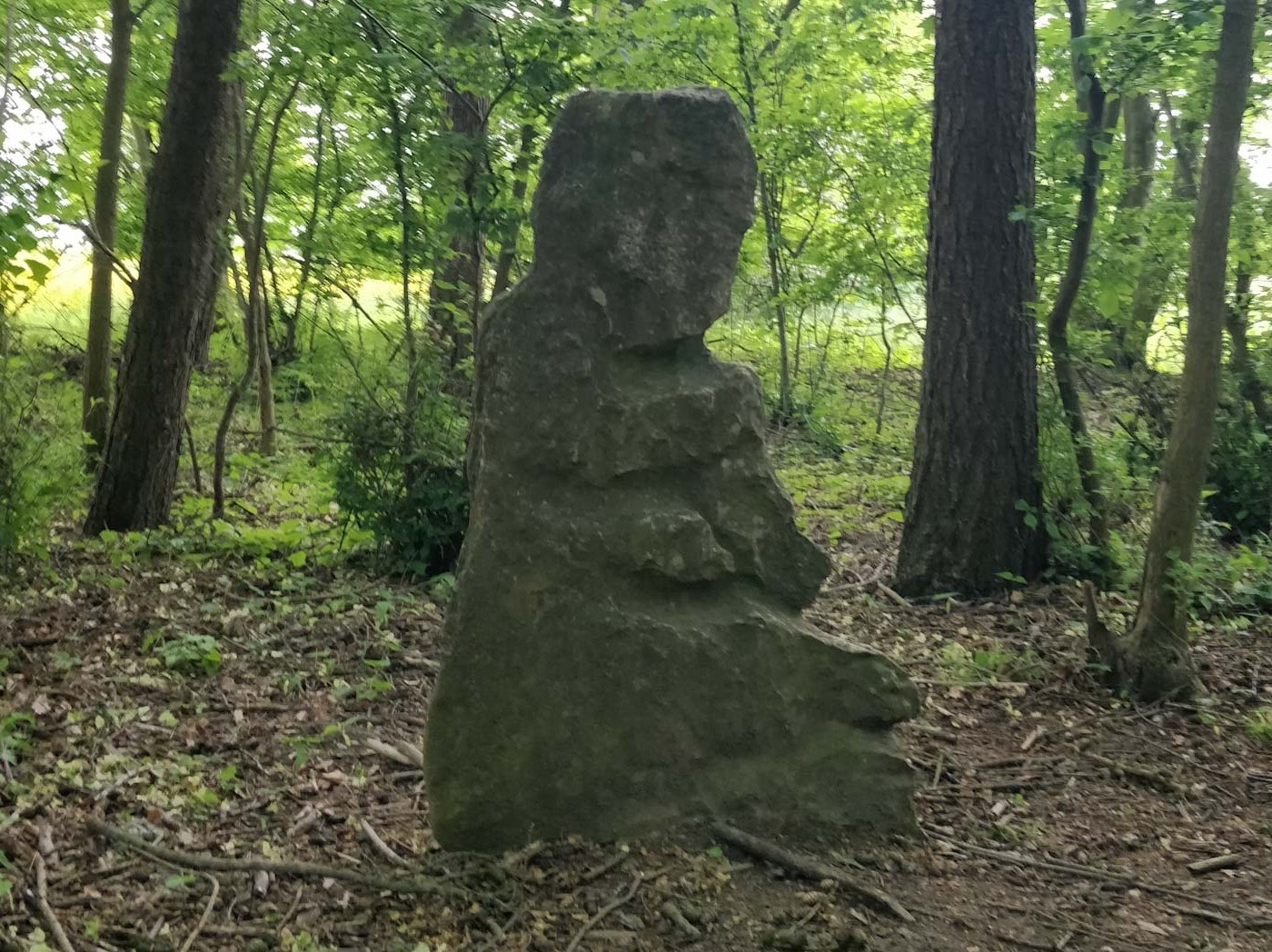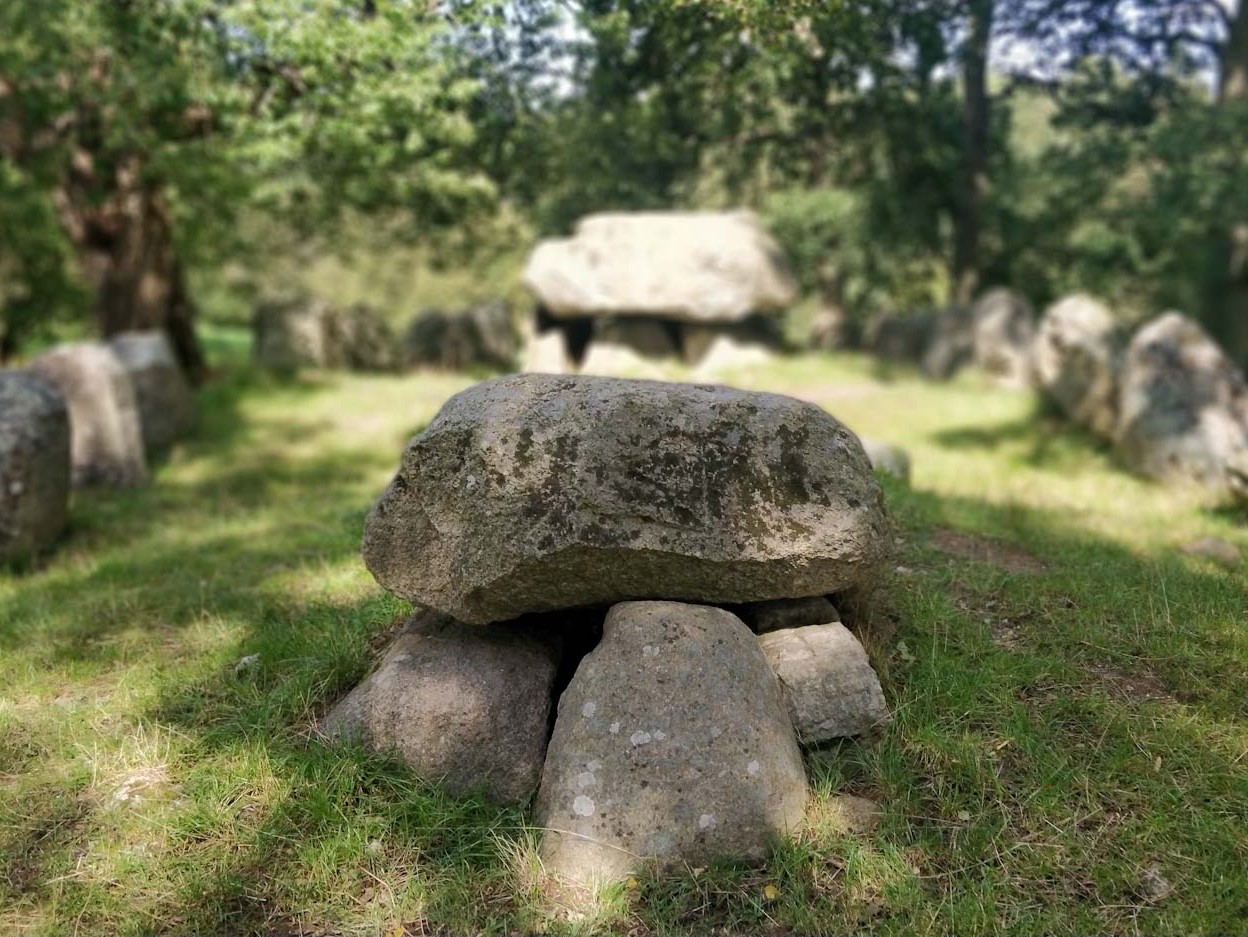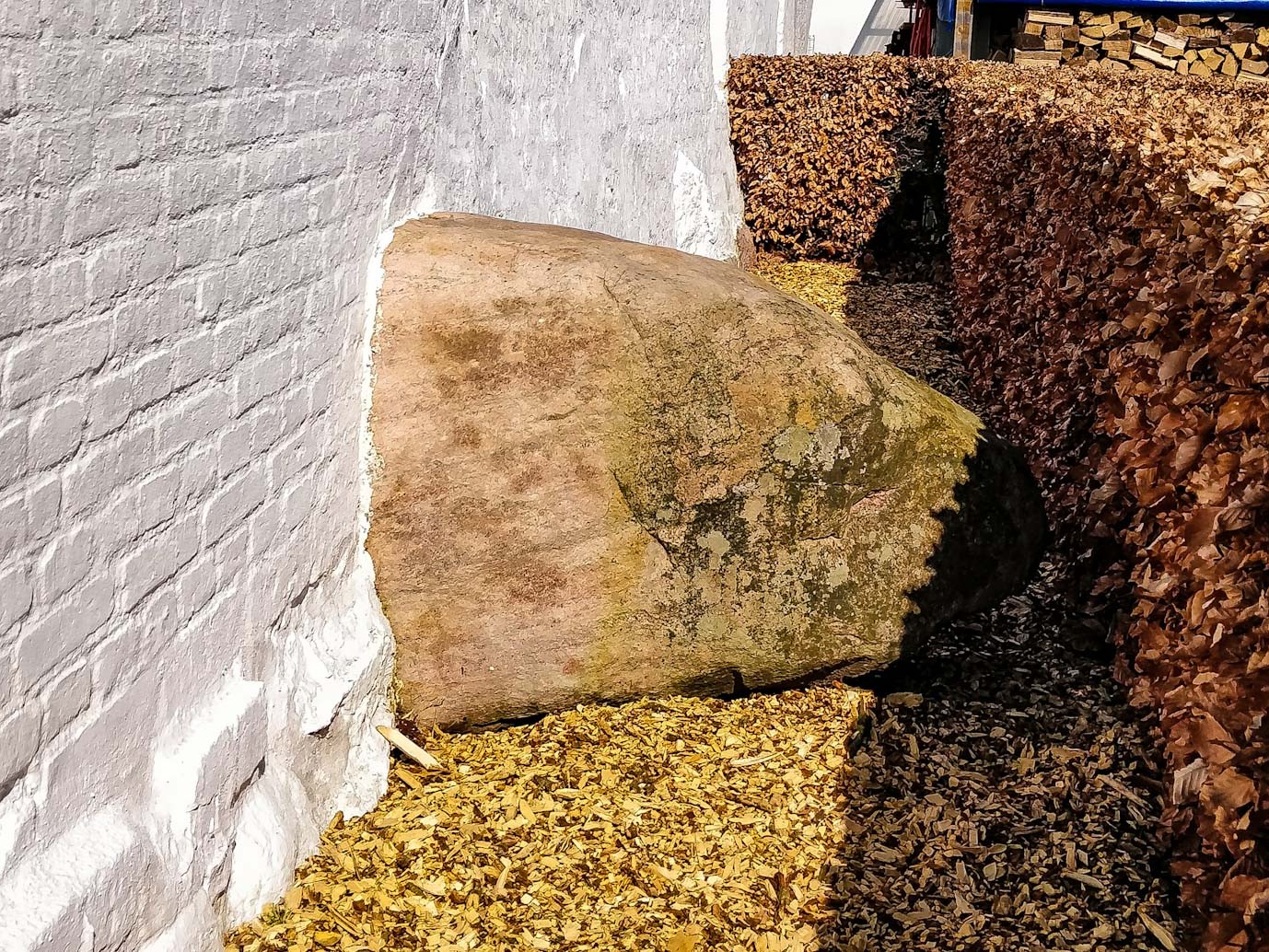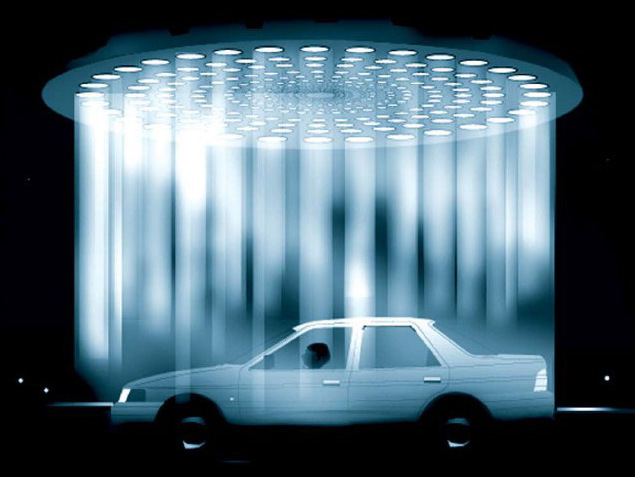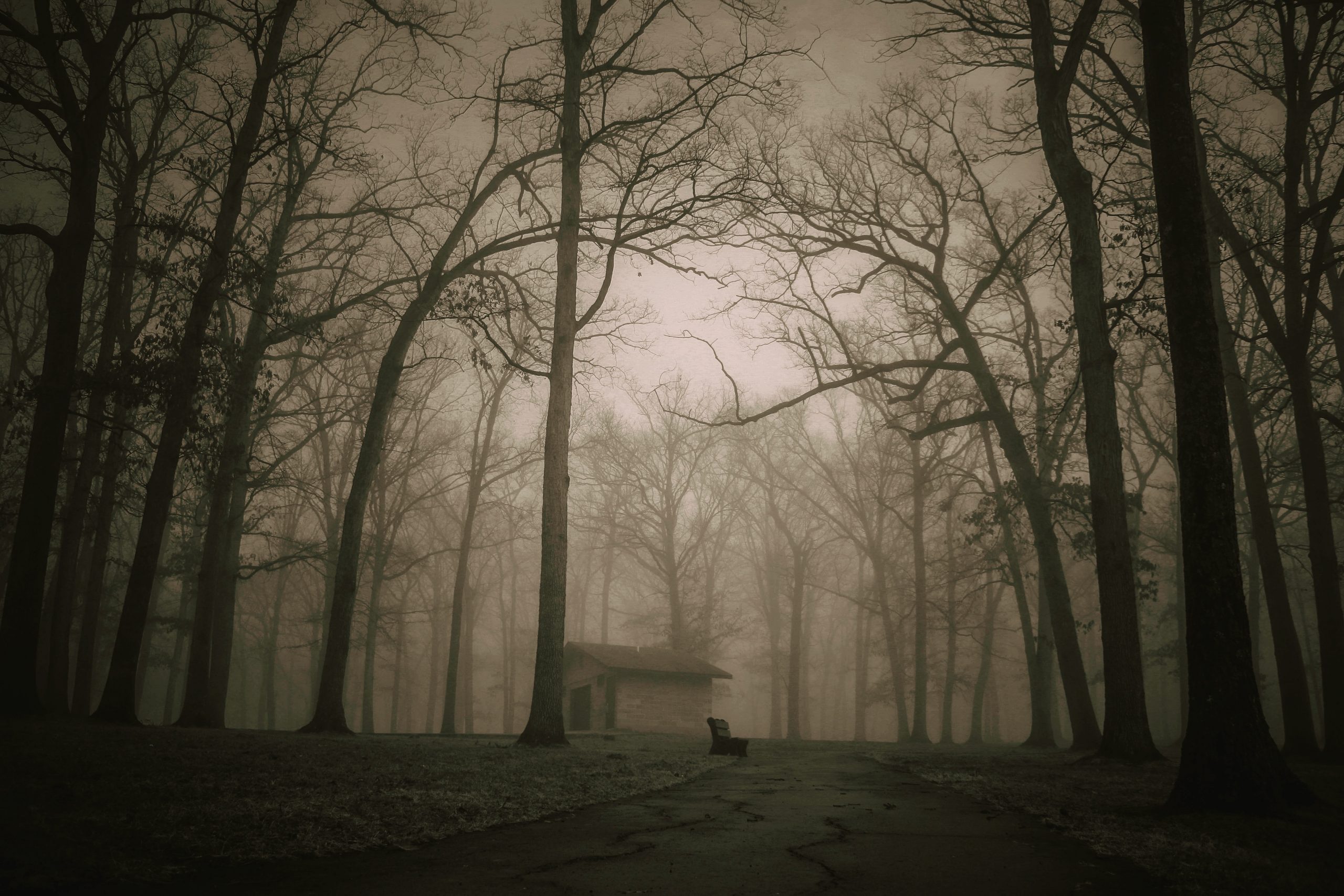Case Type: CE3, Landing case
When: 1960 (reported and investigated in 1965-1966, published 1967)
Where: Close to the Gyldenholm estate, south of Slagelse (55.33619, 11.46704)
Investigators: Multiple
The Encounter
On the 27th of April, 1960, at 03:00 in the morning, “NN”, a then 31-year old painter, was driving in his work van along the country road from Slagelse towards Næstved. The speed of the car was 60 km/h and the weather was slightly misty, with a mild wind blowing. When he passed by the estate known as Gyldenholm, 11 km south of Slagelse, NN began to feel as if he was being watched by someone or something. After driving out of the forest surrounding the estate’s main building, he saw something unusual at roughly 20 degrees over the horizon: A ring of white light that approached the car with great speed, but halted just short of reaching it. The car’s ignition system and lights abruptly stopped functioning. NN instantly clutched out, braked down, and pulled to the right side of the road. When NN stopped the car, the UFO was 6 meters away from him.
NN describes the UFO more or less like a classic flying saucer, 9 meters in diameter and 6 meters in height. The shape resembled two bowls joined by a band of glowing light with a small stripe on the upper side. On the top of the saucer was a cupola with a fluorescent stripe across. The lower half had three round, glowing spots that NN assumed were windows. The color of the flying saucer was a greyish-green. The below drawing was made by a professional illustrator, under the guidance of NN.
The saucer was hovering about 3 meters above the ground, when three telescoping landing legs started to descend from the bottom of it. A thick cylindrical tube slid out, stopping just before it touched the ground. A rectangular opening appeared on the tube, and 4 human-like figures exited it. They then started moving towards the car with slow, graceful movements, which NN described as similar to those made by divers walking on the ocean floor. NN noticed that the four humanoids were wearing shiny green suits with a symbol of three dark vertical stripes, of which the middle was the longest.
While the saucer crew moved towards NN’s car, a thick cable with a square screen at the end glided from the flying saucer’s underside towards the car, stopping approximately 2 meters from its right front window. The screen was held by the cable at a height of one meter and NN noticed a glowing round white lens appear on it, like on a camera. Around this time NN also realized that the crew only measured about 90 centimeters (i.e. around 3 feet) in height. Their faces looked somewhat flatter than most people’s, but still largely human. NN observed the saucer crew moving their mouths just like they were having a conversation with each other, but with no sound coming from them. They were carrying devices that looked like large flashlights, which they used to shine into the cabin of his car from all sides. Everything during the experience was completely silent except for a slight buzzing that NN compared to the sound made by high tension wires
After a while, the four humanoids moved back towards the flying saucer and after making a little jump, floated into the opening in the cylinder, which then closed and retracted. The saucer then pulled up its landing legs and the cable with the “camera”. With a flash of very bright light and with incredible speed, it then ascended and flew away. The car’s electrical systems then turned on again, which NN noticed when he saw the ignition lamp begin to glow. He then exited the car and immediately detected a weird, burnt smell. Upon inspecting the landing site, he saw that the flying saucer’s tripod landing gear had left fist-deep depressions in the ground. Touching the marks left by the landing gear, NN could feel that the surface of ground was very hot. NN noticed later on that his wristwatch was four minutes behind the other clocks in his house, which led him to assume that the encounter lasted four minutes in total. NN visited the landing site several times after his encounter and would notice that every time there was a spot where the vegetation grew at a much slower pace than elsewhere.
Aftermath and investigation
The incident took place in the spring of 1960, but went unreported at the time by the witness. It wasn’t until early 1965 that, by coincidence, it came to the attention of Scandinavian UFO Information (SUFOI). Several different investigators looked into the case, all of them deeming the witness to be a sensible and trustworthy man, who at the very least honestly believed that he had experienced what he said he had. The reason he didn’t report it until so many years later, and generally only told very few people about it during that period, was that he wanted to avoid any publicity.
The landing location was investigated by SUFOI. Indeed some markings were found in the grass where the witness described it. It was nonetheless impossible to conclude that they were the result of what NN said they were. The only certainty was that the vegetation did seem to be inhibited here, and that there were many possible causes for this.
Some other details are a bit more difficult to accept. SUFOI investigator X. P. Madsen visited the location and tried to recreate the whole scene. He concluded that NN’s stopping distance – the point from where the car died and he braked and pulled over, to where the car finally stopped – would have been somewhere in between 1.5 and 2.5 meters. This is a very short distance if you are driving at 60 km pr. hour. As NN did not experience an abrupt stop, a theory was raised that it happened due to a “force field” emitting from the saucer. Another more straightforward explanation might be that he was driving a lot slower than he actually remembered.
Commentary
The Gyldenholm landing has all the ingredients of a classic UFO landing case: A saucer-shaped craft stopping a car as well as the passenger’s watch, extraterrestrial beings wearing uniforms with strange symbols, disturbing-looking alien surveillance equipment used to inspect the witness and vegetation that stops growing at the spot where the saucer landed. There are many things that point to this case being, at least in a subjective sense, a real experience, and not a hoax.
First of all is the long duration of time between the incident and the report, which makes no sense from a perspective of deception. If it was a story made to fool the public, he would surely have come out with it much sooner, not waiting more than 5 years. Of course, this does largely mean taking NN’s word that his UFO encounter really happened in 1960, which we can’t be certain of. It is also important to be aware that some characteristics about the involved ufonauts has later been interpreted more in line with the current notions of how aliens are “supposed” to look. This is apparent in the above illustration, that was made at a later time, when the imagery of the typical “grey” alien was first beginning to gain traction.
Regarding the stopping of vehicles and the short circuiting of mechanical and electrical appliances, it has long been recognized as an often recurring feature of UFO encounters from all over the world. But this was not really common knowledge at the time. That is not to say that NN couldn’t have picked up the notion through popular culture, of course. After all, this exact scenario had happened in f.x. Science Fiction movies as far back as The Day The Earth Stood Still, from 1952.
Regarding the movements of the humanoids, it is interesting that they were described as moving like divers on the ocean floor. One would assume that a witness who saw what appears to be extraterrestrial visitors, maybe would have ascribed the movements to gravitational effects. But remember that this happened in 1960, and while it was not reported until 1966, it would still be a few years until people would see the results of gravity on humans in space, from the 1969 moon landing footage. While this is not proof of the reality of the event, it is nonetheless a detail that seems remarkably ahead of its time.
One very interesting element of the case is the complete silence, sans the buzzing noise, during the whole incident. UFOlogists later came to identify this as the “Oz Factor”, a feature of many UFO experiences that may be related to electromagnetic radiation, which can lead to both physical effects on electrical systems as well as psychological changes in witnesses. However, this factor was not really properly defined or very well known among researchers, let alone lay people, until years after the Gyldenholm incident. The fact that NN compared it with the sound of high tension wires, also seems like an important clue in this regard.
It is clear that there was definitely some kind of alteration in sensory perception for NN from his description of not only the Oz Factor, but also the feeling of being watched just prior to seeing the circle in the sky. NN also stated that he wasn’t afraid or anxious at any point during the encounter In fact, he felt somewhat apathetic. This unusual emotional reaction to such an extraordinary experience points in the direction of an altered state of consciousness, but what exactly led to this state we can only speculate about.
Whatever you might believe about the objective reality of the Gyldenholm case, it seems quite clear to us that NN’s story was not a fabrication. It might even be the case that some external physical phenomenon may have helped shape it.
Sources
- UFO-Nyt #1 (1967), #6 (1973) & #6 (1978)
- Willy Wegner – UFO Landinger I Danmark
- Willy Wegner – UFO’er Over Danmark
Tags
In the same category…
The Store Vildmose CE3
One late autumn evening in 1957, a farm owner and his wife were driving through the Store Vildmose area, when they observed a strange looking craft.
Soap Bubble UFO’s
During the 1960’s and 1970’s it appeared as if Denmark was being visited by seemingly sentient, soap bubble-like objects. What were these strange bubbles, and what happened to them?
The Evald Maarup Case
The 1970 incident involving police officer Evald Maarup is considered one of the most credible, unexplained UFO cases from Denmark. It gained a lot of publicity both at home and abroad, with journalists as far away as Ghana wanting to cover the story.

